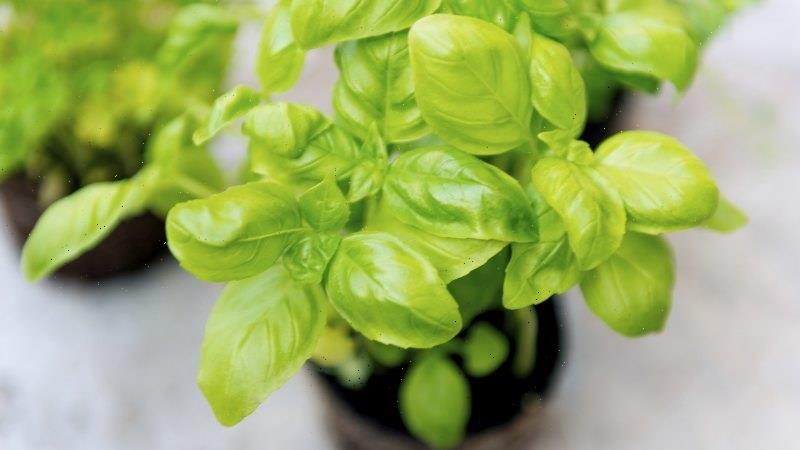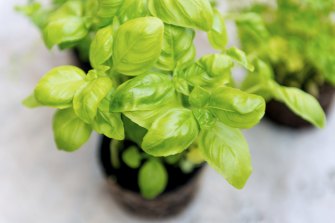If summer were a fragrance, basil would be its flirty herbaceous top note, freshening base layers of sunscreen and mozzie coil and balancing the heavy sweetness of mango and frangipani.
Basil tastes as good as it smells and is so easy to grow that everyone can have one or three.
Save some seed from your most vigorous, best-tasting basil plant for next year.Credit:iStock
Even apartment dwellers with no balcony can grow basil if they can beg a stem from the thriving bush of a friend. Fresh basil cuttings (not ones bought in a plastic sleeve at the supermarket) will keep growing in a water glass in a few centimetres of water for months – best in a well lit spot, but no direct sun.
The friend with the thriving bushes may be growing basil in a pot or in the ground. Either way basil likes a rich, well-drained mix, plenty of water, lots of sunshine or only light shade, vigilance against snails and slugs when young, and dilute amounts of liquid fertiliser delivered regularly to keep the growth of new leaves super speedy.
Basil should be harvested by pinching off the top few sets of leaves at the growing tip, rather than by stripping leaves off the stem. Pinching out the tip promotes bushiness in the plant, producing more growing tips to pinch out next time. If harvesting for a pesto, take a few long stems, down to a healthy pair of leaves.
Pinch off flowering buds as soon as they appear because the flavour of the leaves changes once the stem shifts into reproduction mode. This flavour change only affects the flowering stem, so you can have delicious leaves for yourself, and still feed the bees.
And speaking of flavour, be sure to start with the right basil, usually called Sweet or Genovese Basil. There are other basils to play with – the tiny-leaved lime green mounds of Greek, or bush, basil; the frilly, purple-swirled leaves of opal basil; purple-stemmed anise-flavoured Thai basil; lemon basil; cinnamon basil; holy basil – but sweet basil is the one you need as a companion to anything made with tomatoes or to make a traditional pesto.
Buds eventually develop into tall flowering spikes, madly attractive to bees, and cute in a bud vase by the bed or on the desk. The flowers are edible (as long as you haven’t sprayed them with a pesticide, or recently drenched the plant in liquid fertiliser) and have a mild basil flavour with a slight bitter twist. The little black seeds are also edible, and swell when soaked into a gelatinous kind of chia-esque pudding, variously flavoured and spiced in Asian and Arabic cooking.
Save some seed from your most vigorous, best-tasting plant. Store in a labelled envelope and sow into jiffy pots or punnets once the weather warms in spring to get an early start on the scent of next year’s summer.
Make the most of your health, relationships, fitness and nutrition with our Live Well newsletter. Get it in your inbox every Monday.
Most Viewed in Lifestyle
Source: Read Full Article






